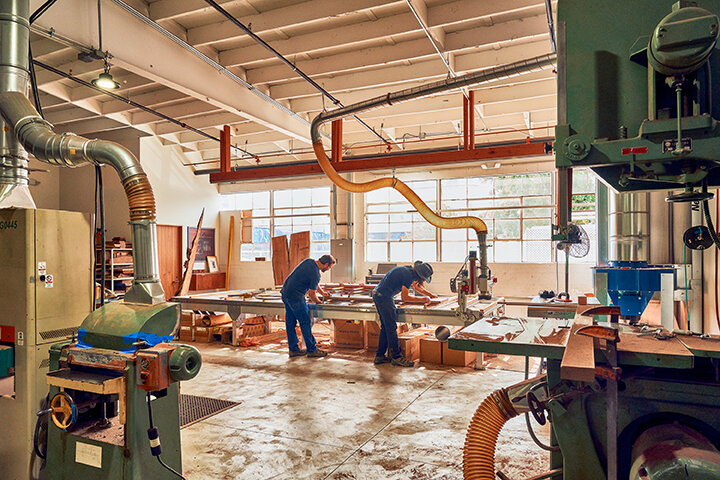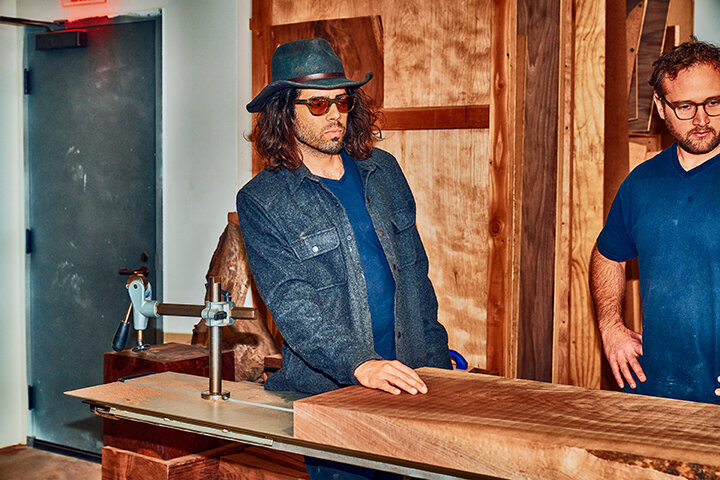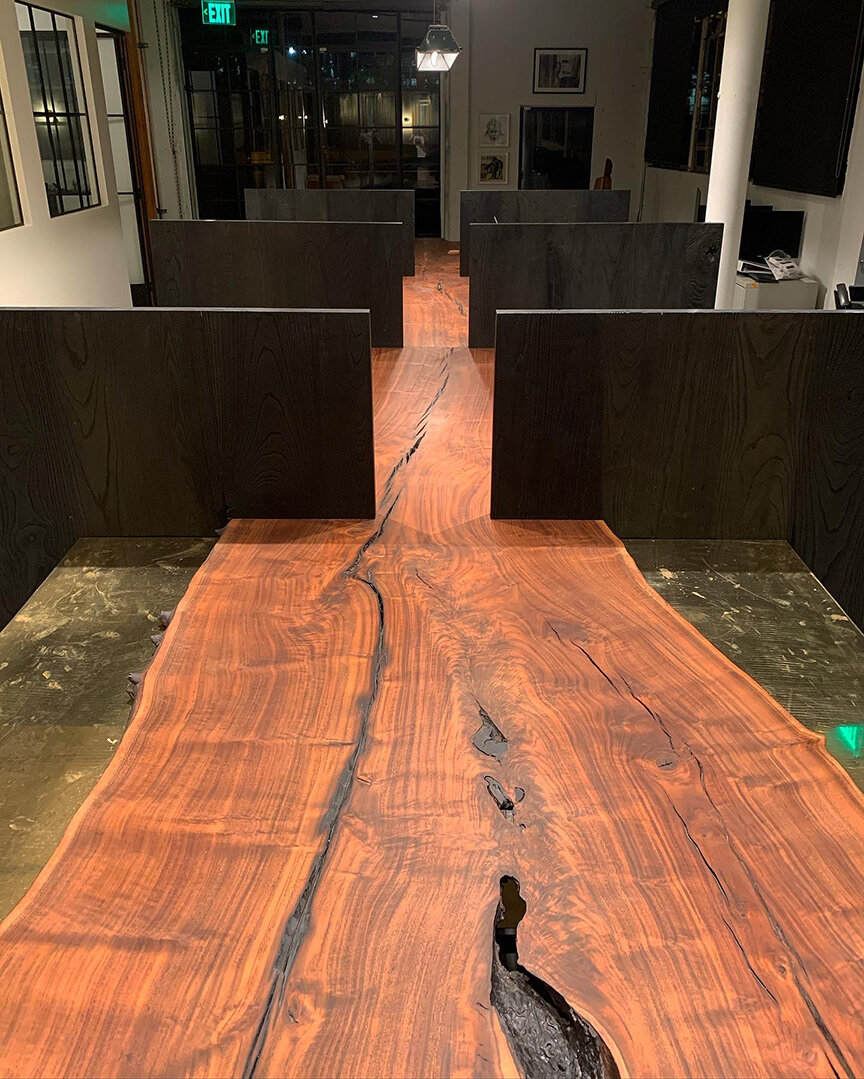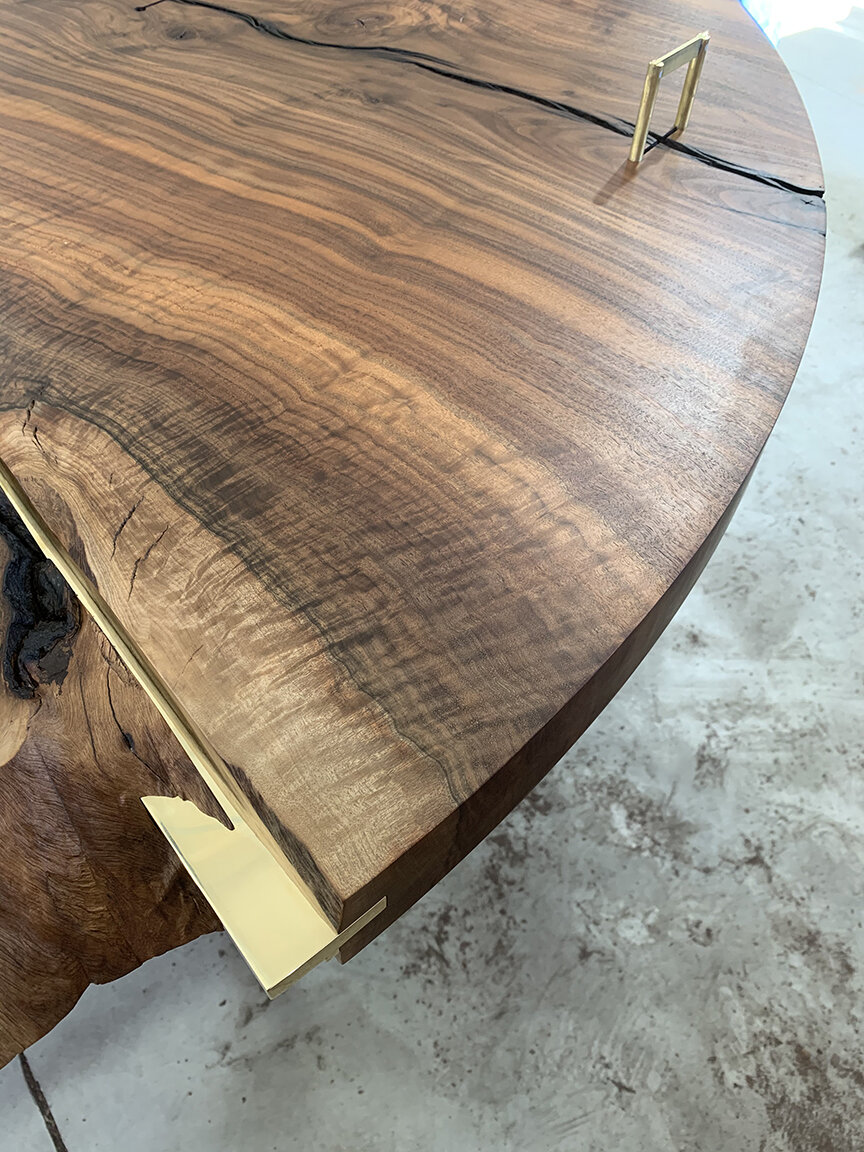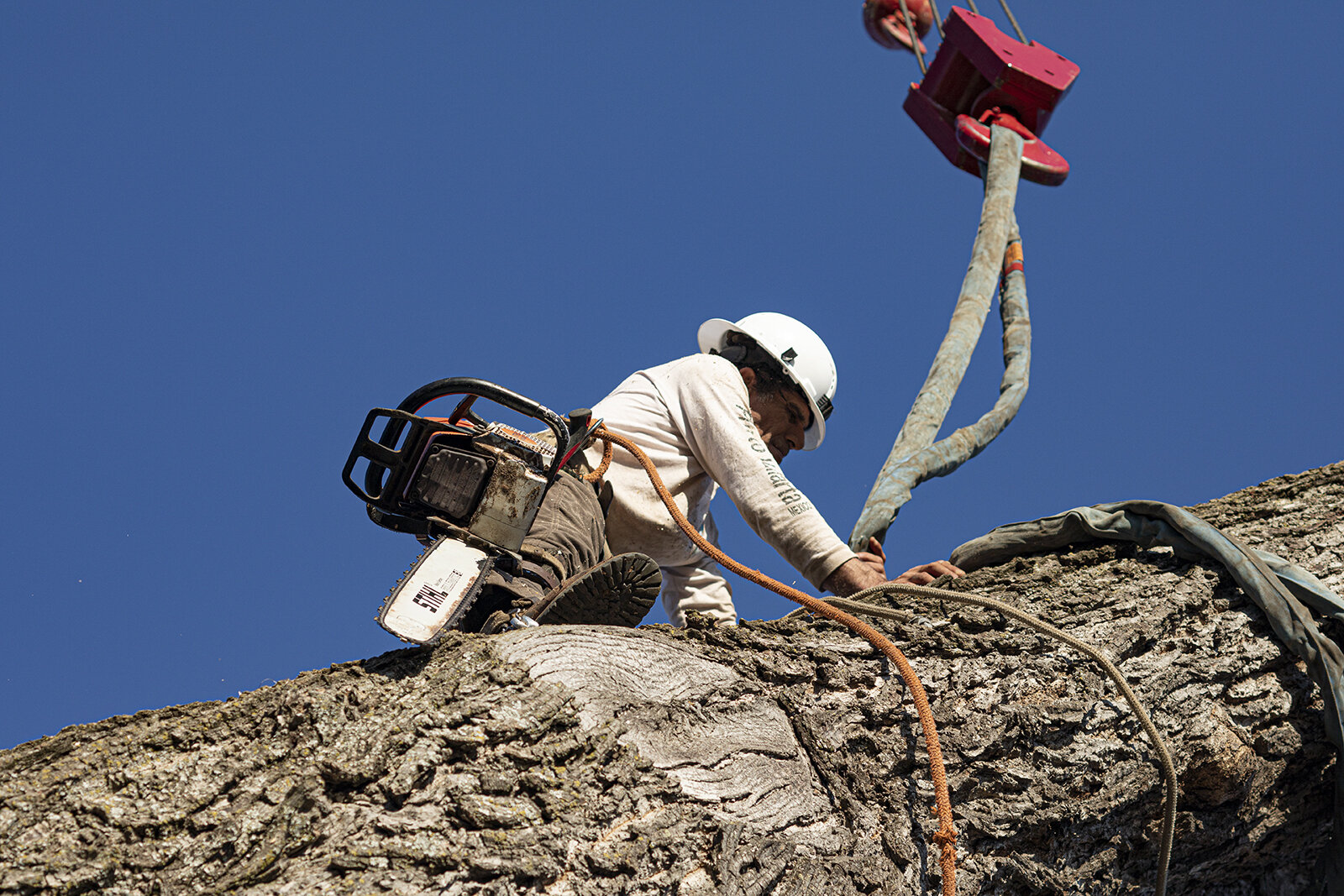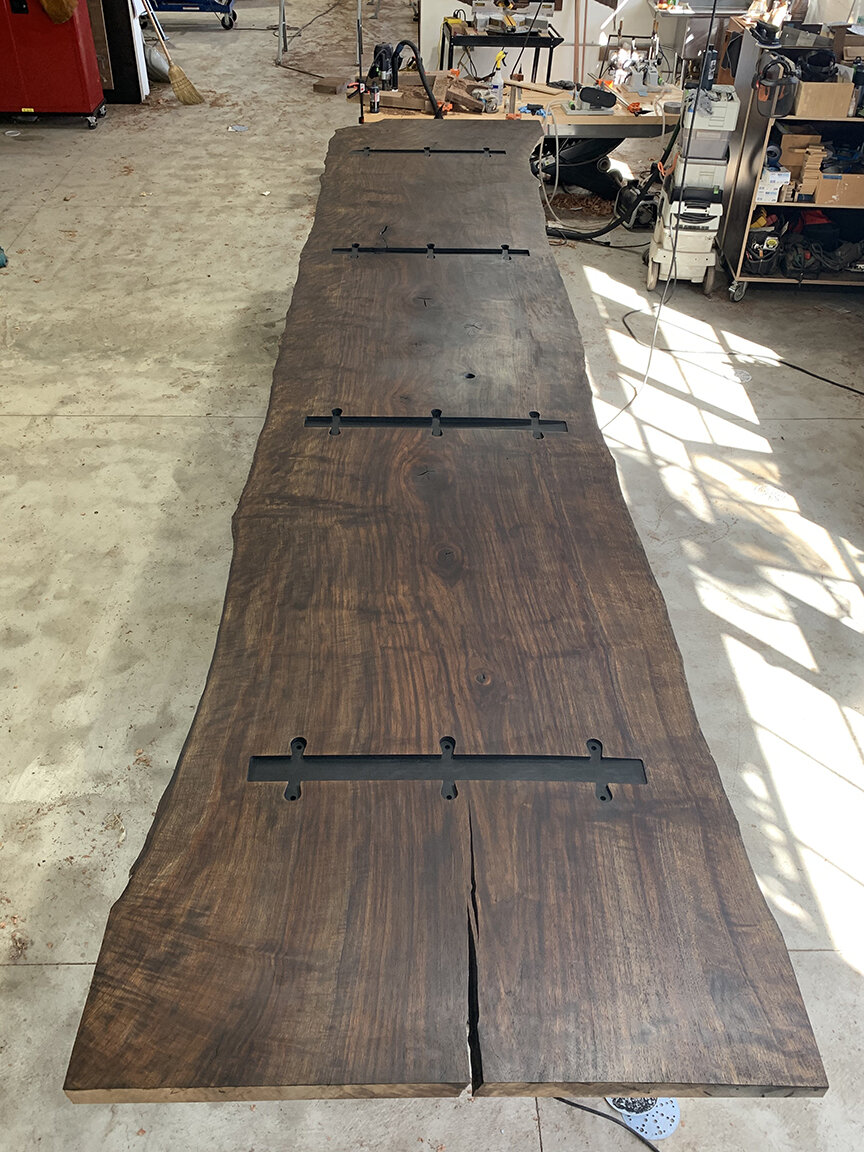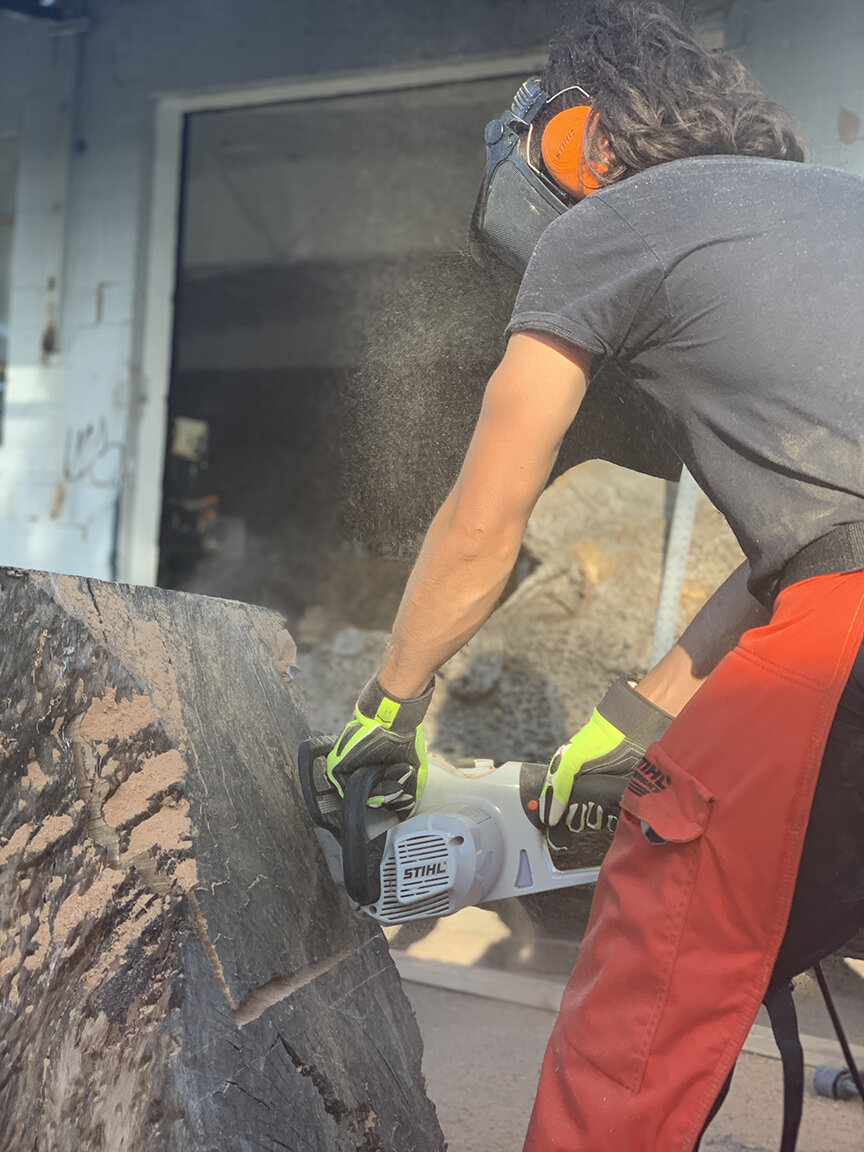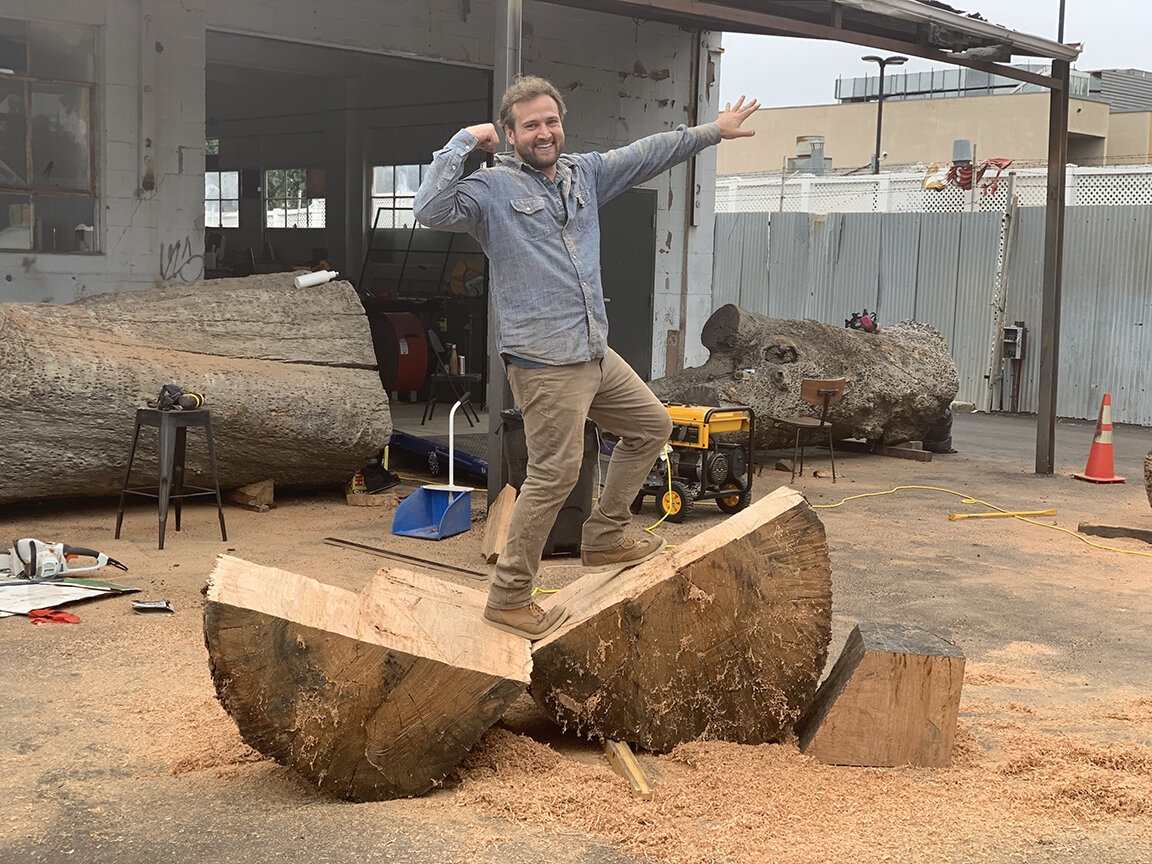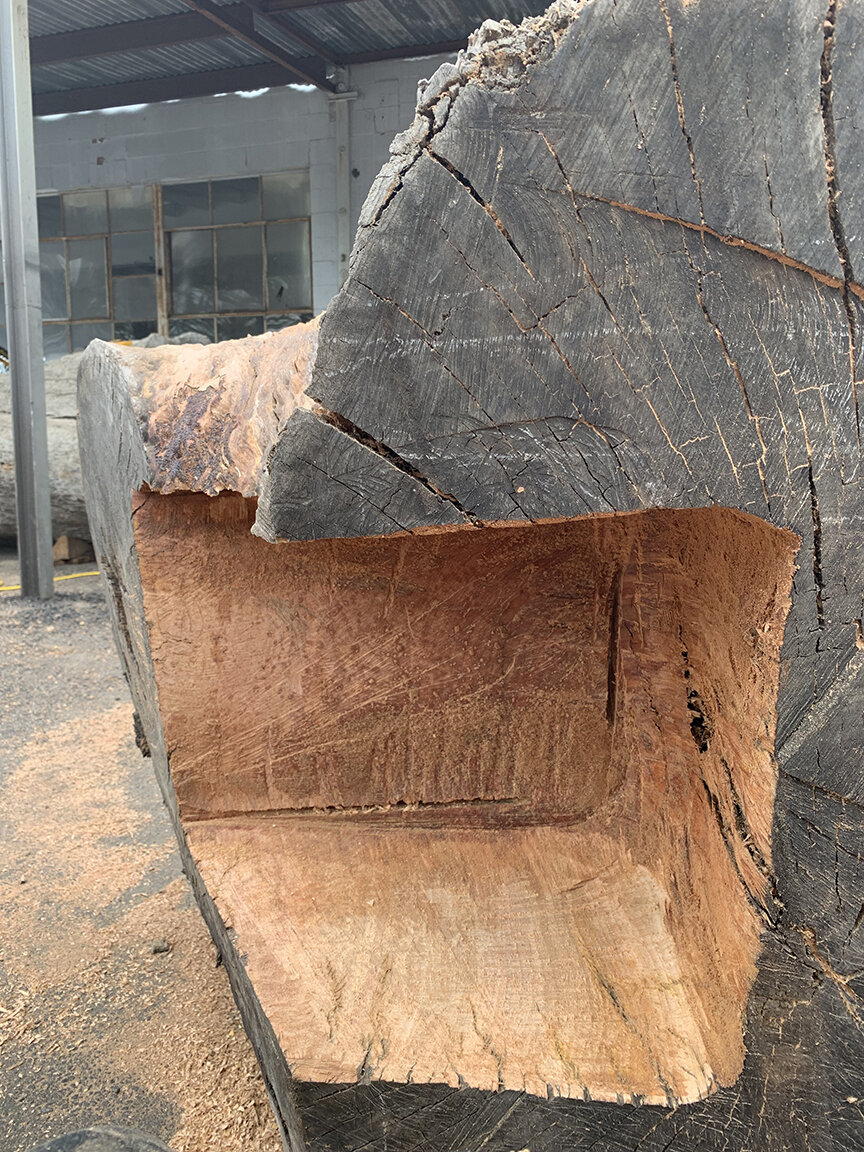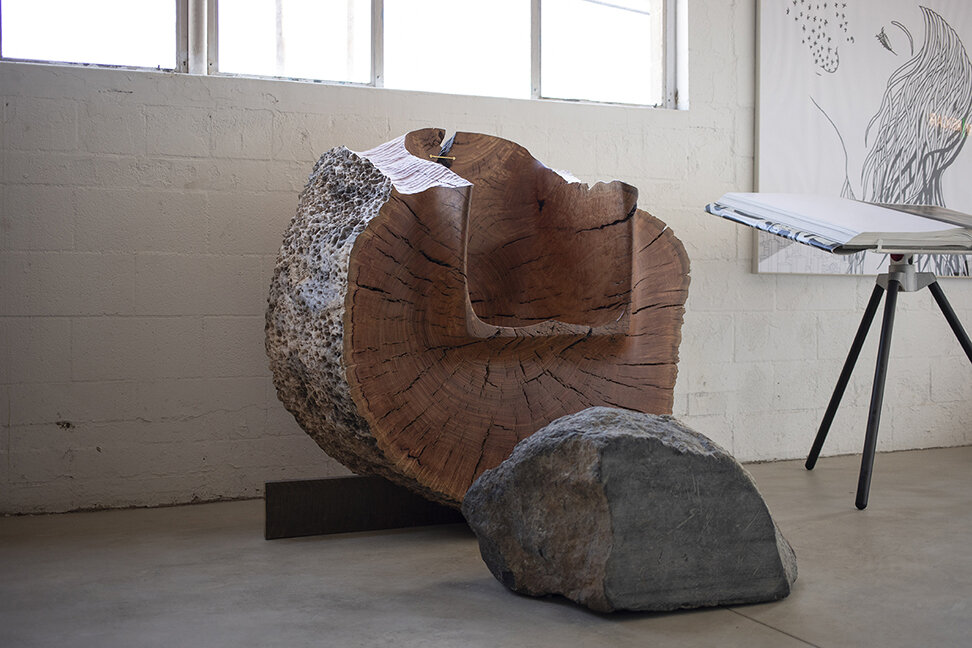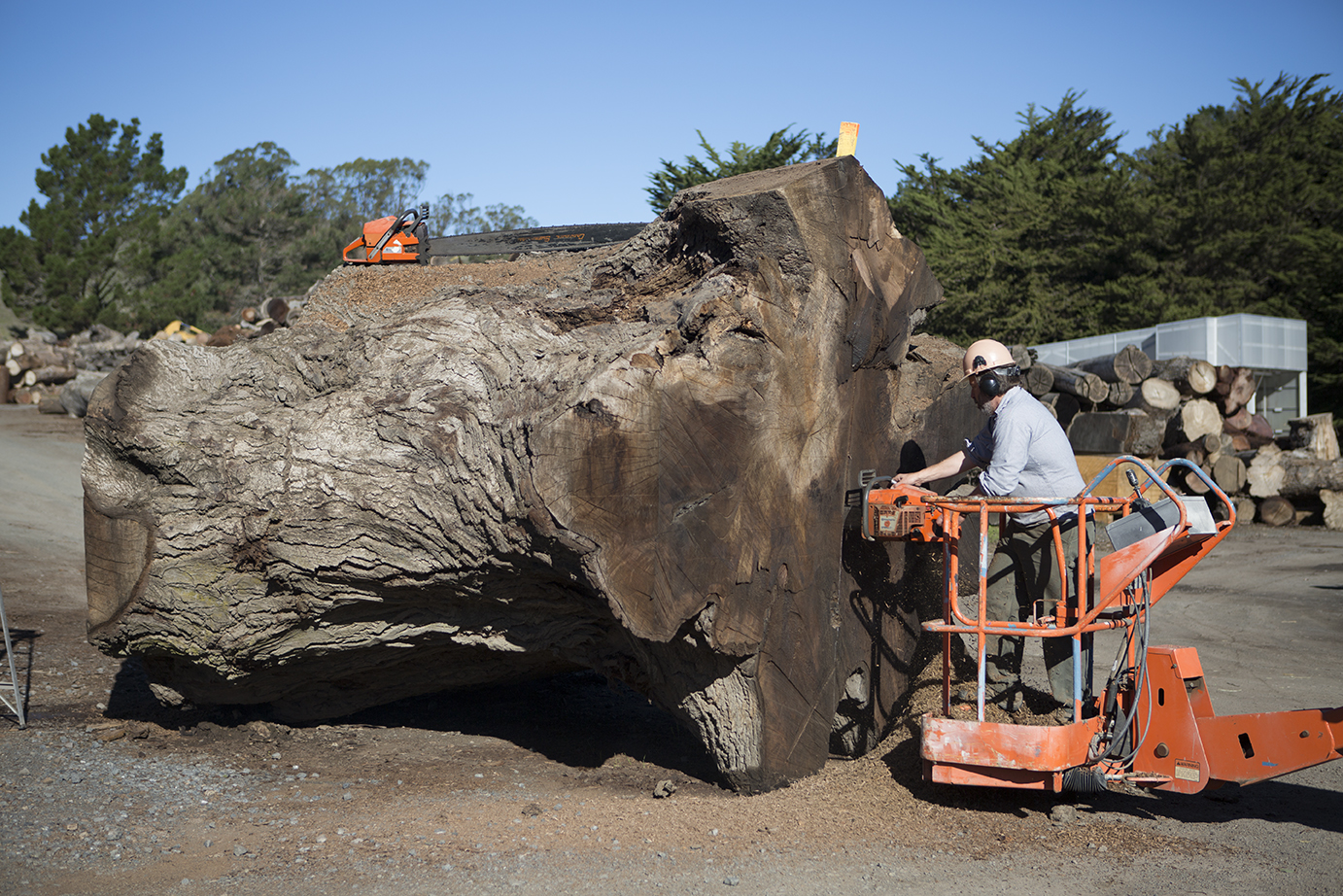The Most Innovative Woodworker in California
Read MoreMichigan Mappa Burl Shelves
Salk Insitute/Julius Shulman
I learned of the beauty of drainage by a bricklayer at a site visit. While I was fantasizing about the concepts, materials, and proportions, he asked, “and how does it drain?”. This seemingly minuscule detail can make or break a project, and in the case of Louis Kahn’s Salk Institute, it is the trardemark of the project.
A collection of cast bronze vessels by artist Jonathan Cross without matching saucers led me to design a set of Mappa Burl shelves that celebrated a drainage system. Utilizing a system of wicks and brass channels milled at calculated angles, the system drains the overflow from each watering into a collection of polished brass vessels by Alma Allen.
Santa Monica Studio by Jack Strutz
Communal Desk
Harvest Table II
Oroville Bastogne Tree
100 years to grow and 3 long days to meticulously remove.
THis Bastogne Walnut tree found me through an interwoven network of friends, arborists, and fellow woodworkers.
It is fairly common, among those who work with natural materials, that one is asked about the morality of removing something from where it came into existence and transforming it into whatever form or object one desires. WHether it be a glorious tree that has lived several centuries, a magestic mountain that emerged across millennia, or a creature that evolved from a single cell organism over megaannums. in regards to trees, which i am more personally involved with, I can say that one must think of all outcomes that may result from simply leaving a tree to stand as it begins to age, decay, and eventually die. Is it perfectly healthy and far from completing its expected lifecycle? will the decaying of this tree feed a Microecosystem? will its falling branches cause harm to its neighboring environment? is a dead or decaying tree more functional as a relic of its former glory or reimagined into something new?
In regards to this specific tree, I refused it several times before being convinced by a few simple facts/realities. The tree had dropped a limb on the private land owner’s horse shed and nearly killed her horse. Additionally, it had started showing signs of a fungal disease and had a small area of rot began forming. Lastly, the owner simply did not want to risk another limb falling and possibly crushing her family or animals and was going to have it removed by whomever was willing to do the work. I offered her the option of paying an advance to keep the tree alive and in its place until its health began to decline further, but my offer was declined for the above reasons. As such, i decided to make the most of this magnificent tree, and preserve the memory of its existence by transforming it into the most beautiful collection of furniture and sculpture that I am capable of producing.
WHILE THE TREE WAS BEING REMOVED, LIMB BY LIMB, I THOUGHT OF THE PRODUCTION THAT WAS CHOREOGRAPHED TO MAKE IT ALL POSSIBLE. HOWEVER THE TREE CAME INTO EXISTENCE. THE PROXIMITY TO THE RIVINE ACROSS THE STREET THAT ALLOWED IT TO GROW SO DAMN LARGE. THE LANDOWNER WITH THE CRUSHED HORSE SHED. THE ARBORIST WHO OFFERED TO REMOVE THE TREE A DECADE PRIOR. THE PHONE CALL BY MY OLD SUPPLIER WHO CONNECTED ME WITH THE ARBORIST. MY CLIENT/INVESTOR WHO WAS WILLING TO EMBARK ON THIS JOURNEY WITH ME. PG&E WHO WAS INVOLVED IN TRIMMING THE LIMBS THAT WERE WEAVING THROUGH NEARBY POWER LINES. THE PARTIALLY DEAF CRANE OPERATOR (FROM A CRANE ACCIDENT) WHO WORKED SEEMINGLY EFFORTLESSLY IN TANDEM WITH THE LUMBERJACK WHO LOOKED AND ACTED LIKE KEITH RICHARDS. THE 5 TRUCK DRIVERS WHO DRAGGED PILES OF TWISTED, WATER SATURATED, SEVERAL TON TRUCKLOADS ACROSS THE NORTHERN TIP OF CALIFORNIA. AND MYSELF, WHO SIMPLY WATCHED ALL THE GEARS TURN AND THE SECOND CHAPTER OF THE TREE’S LIFE UNFOLDING.
Commune Table
Constellation
Throne No. 2
In college, i remember learning about the taoist concept of the uncarved block - a state of pure potential. I think of every piece of wood as having this potential. indecision and poor decisions lead to a failure of potential. the more beautiful, large, or rare a piece of wood, the greater the weight of each decision.
this piece began as a somewhat cylindrical cut from a Blue Gum Eucalyptus tree trunk. The pock-marked texture of the cambium and bark make this particular Eucalyptus extremely rare as they typically have a less interesting smooth surface. brought over from australia during the California gold rush, they were planted in large plantations for the purpose of making furniture and railroad ties. the wood was too dense and hard to drive a railroad spike into, and was too prone to warping and cracking to make fine furniture.
marking the beginning of an ongoing series that I call tree form sculptures, This piece began with a fascination with the idea of inhabiting a tree. as a child i used to climb trees, admiring them from their exterior and extending my own limb to climb each of the trees limbs towards the crown. WOrking with lumber and slabs allowed me the opportunity to see inside the tree for the first time, shaping one or several of its many pieces into a greater whole. working with large, solid sections of trees allows me the opportunity to truly inhabit a tree. by sculpting the previously uncarved block into a form that invites the human body to inhabit it, I believe this series is capable of reconnecting inhabitants with nature in a new and exciting way.







